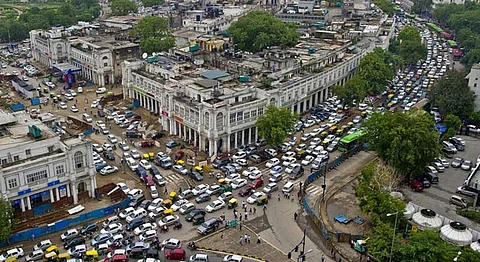
- HOMEGROWN WORLD
- #HGCREATORS
- #HGEXPLORE
- #HGVOICES
- #HGSHOP
- CAREERS
- ABOUT US
- CONTACT US

Many Delhi doctors in the past have suggested leaving the city if you suffer from a respiratory problem. With many schemes in place to reduce the pollution, the city authorities are putting their ears to the ground to further gauge the improvements that could be made in the quality of life. The World Health Organization (WHO) in the year 2014 listed New Delhi as the most polluted city in the world on the basis of outdoor air pollution, being monitored from almost 1600 cities in 91 countries. This caused roaring concern amongst people who felt that the government was being indifferent towards traffic congestion in the city.
The High Power Committee, which was elected in 2014 by Urban Development Committee, recently proposed a Rs. 20,000 crore plan. This proposal will be passed once it gets a nod from the Central government. It will stress on the improvement on public transport and reduce the use of private vehicles.
According to The Hindu, the sanctioned money will be used for parking management districts, to integrate 207 metro stations with other forms of public transit systems, construct cycling tracks and footpaths and remove choke points across the national capital.
A ministry spokesperson of India’s urban development has said that implementing ‘The carrot and stick policy’ will encourage use of public and motorized transport. The Congestion Tax proposed by the committee states that inflated private parking prices will effectively bring down the number of vehicles.
Some of the other recommendations by the committee are; putting better use to existing road space and traffic instead of constructing more flyovers in the city and turning gated communities into free zones so that people can walk through them and take “short cuts.” The Ministry will deploy a fleet of 2,000 buses in the coming months and add 4,000 more to it in the next phase to lure commuters to use public transport, having bus stops within walking distance of one’s home or office, fares lower than the per-kilometre cost of running a two-wheeler and an overhauling of the bus rapid transit system.
The committee is also having discussions over setting up a Unified Metropolitan Authority with jurisdiction over National Capital Region at the earliest. The Hindu stated that “the Committee finds that an interim solution for the problems in public transport system in the National Capital Region is the proper and planned traffic management, stricter licensing system, integration of bus services with metro and effective utilization of ring railways in the entire region.”
Although these proposed methods sound promising, the implementation of these ideas in the already wrought odd-even scheme need clear thought and prediction of consequences. With the green cover of the city limited to parks, a good portion of the funds could be utilized in naturalizing the environment to reduce pollution for years to come.
